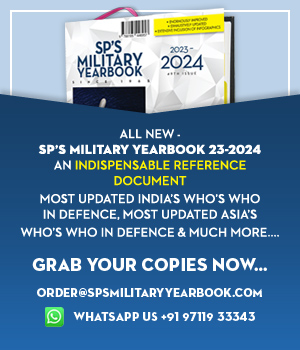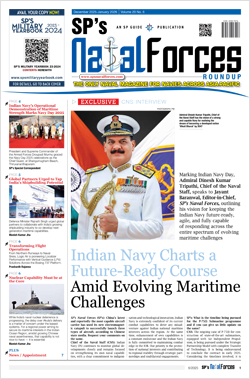INDIAN ARMED FORCES CHIEFS ON OUR RELENTLESS AND FOCUSED PUBLISHING EFFORTS
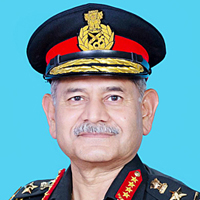
The insightful articles, inspiring narrations and analytical perspectives presented by the Editorial Team, establish an alluring connect with the reader. My compliments and best wishes to SP Guide Publications.
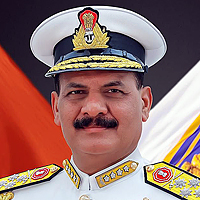
"Over the past 60 years, the growth of SP Guide Publications has mirrored the rising stature of Indian Navy. Its well-researched and informative magazines on Defence and Aerospace sector have served to shape an educated opinion of our military personnel, policy makers and the public alike. I wish SP's Publication team continued success, fair winds and following seas in all future endeavour!"

Since, its inception in 1964, SP Guide Publications has consistently demonstrated commitment to high-quality journalism in the aerospace and defence sectors, earning a well-deserved reputation as Asia's largest media house in this domain. I wish SP Guide Publications continued success in its pursuit of excellence.
- Global Partners Urged to Tap India's Shipbuilding Potential: Rajnath Singh at Samudra Utkarsh
- All about HAMMER Smart Precision Guided Weapon in India — “BEL-Safran Collaboration”
- India, Germany deepen defence ties as High Defence Committee charts ambitious plan
- G20 Summit: A Sign of Global Fracture
- True strategic autonomy will come only when our code is as indigenous as our hardware: Rajnath Singh
- India–Israel Joint Working Group Meeting on defence cooperation to boost technology sharing and co-development
Indo-US Cooperative Framework
US Defence Secretary Pete Hegseth recently met External Affairs Minister S. Jaishankar at the Pentagon to discuss close cooperation between the two countries, weapons sales and the upcoming signing of the framework for the new defence partnership
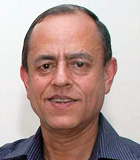 |
The Author is Former Director General of Information Systems and A Special Forces Veteran, Indian Army |

It was covered in these columns earlier that on February 14, 2025, India and the US announced formation of the Autonomous Systems Industry Alliance (ASIA) initiative aimed at scaling industry partnerships for the production of autonomous systems; through partnerships between companies like Anduril Industries and Mahindra Group, as well as L3 Harris and Bharat Electronics. This initiative is expected to enhance both nations' capabilities in maritime security, particularly in the Indo-Pacific region, which is increasingly influenced by China's assertiveness. Focus areas of ASIA include the following: Maritime Drones - production of maritime drone technology; Counter-Unmanned Aerial Systems (CUAS) - development of AI-enabled systems designed to counter unmanned aerial vehicles (UAVs); Advanced Maritime Systems - aimed at enhancing regional security through advanced autonomous technologies; Active Towed Array Systems - L3 Harris and Bharat Electronics are collaborating on the co-development of active towed array systems.
Negotiations are underway for the "US-India Major Defence Partnership in the 21st Century," expected to span 2025–2035, as announced by Prime Minister Modi and President Trump
On July 3, 2025, US Defense Secretary Pete Hegseth met External Affairs Minister S. Jaishankar at Pentagon to discuss close cooperation between the two countries, weapons sales and the upcoming signing of the framework for the new defence partnership. Hegseth said, "Almost right at the beginning of the administration, President Donald J. Trump and Prime Minister Narendra Modi set a strong foundation for our relationship, which we're building on here today: productive, pragmatic and realistic. And our nations boast a rich and growing history of cooperation driven by a shared commitment to a free and open Indo-Pacific."
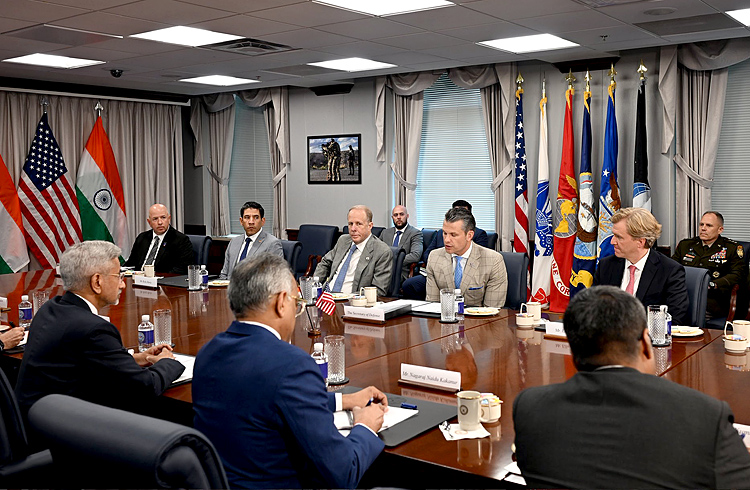
Hegseth further said, "The US is very pleased with the successful integration of many US defence items into India's inventory. And building on this progress, we hope we can complete several major pending US defence sales to India, expand our shared defence industrial cooperation and co-production efforts, strengthen interoperability ... between our forces, and then formally sign a new 10-year Framework for the US-India Major Defence Partnership ... which we hope to do very soon."
This initiative is expected to enhance both nations' capabilities in maritime security, particularly in the Indo-Pacific region, which is increasingly influenced by China's assertiveness.
Hegseth and Jaishankar discussed participation in the next India-US Defence Acceleration Ecosystem Summit, where the two nations will continue to build on bilateral defence industrial cooperation and produce new innovations in technology and manufacturing. Hegseth said, "We're eager to work alongside you to realise our shared goals. They're deep and ongoing." Jaishankar responded by saying that India's relationship with the US is already strong, but more can be done, and added, "We believe that our defence partnership is today truly one of the most consequential pillars of the relationship. It's not built merely on shared interests, but we believe really deepening convergence and of capabilities, of responsibilities. And what we do in the Indo-Pacific, we believe, is absolutely crucial to its strategic stability."
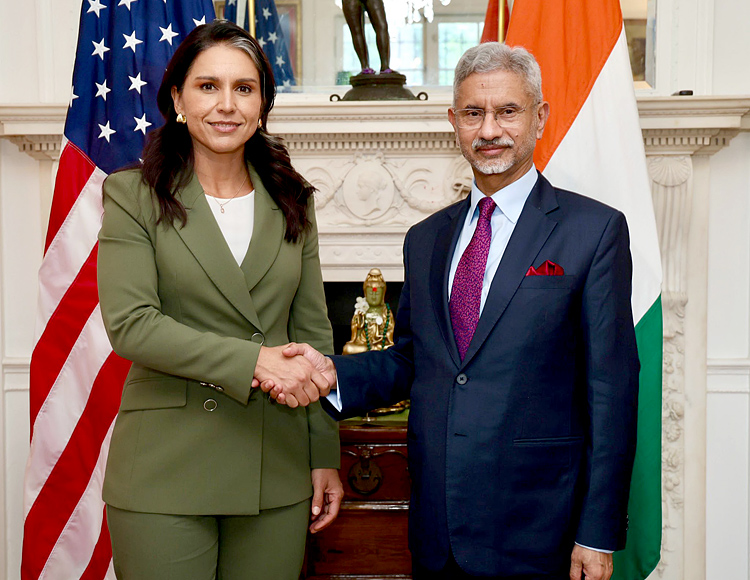
India has already integrated various weapons systems into its own military, such as the C-130J Super Hercules, C-17 Globemaster III and P-8I Poseidon aircraft, as well as the CH-47F Chinook, MH-60R Sea Hawk and AH-64E Apache. It also utilises the Harpoon anti-ship missiles, M777 howitzers and MQ-9B SkyGuardians. During a meeting in February between Prime Minister Narendra Modi and President Donald Trump, the two leaders announced plans to pursue new procurements and co-production arrangements for Javelin anti-tank guided missiles and Stryker armoured vehicles. Also discussed was procurement for six additional P-8I maritime patrol aircraft. Both also pledged to increase military cooperation with enhanced training, exercises and operations.
Negotiations are underway for the "US-India Major Defence Partnership in the 21st Century," expected to span 2025–2035, as announced by Prime Minister Modi and President Trump. This got a further boost when Defence Minister Rajnath Singh and his American counterpart Pete Hegseth agreed to firm up a 10-year framework to further expand defence and strategic ties between India and the US. At the same time there are issues that the US needs to address, which are not related to defence cooperation alone, like the inordinate delays in the delivery of F404 aero engines and the AH-64 Attack Helicopters.
The US must ensure "timely" (responsive and speedy) upgrade of India's combat potential, including through co-development of advanced military platforms, to catch up with China
Trump has announced 10 per cent additional tariffs on BRICS nations, which included India although India abstained from the UNSC vote on the ceasefire in Gaza, as also distanced itself from the SCO Statement condemning Israeli strikes on Iran. Trump has claimed he enforced the ceasefire in Operation 'Sindoor' by threatening both India and Pakistan of not doing trade with them (which India denies). But the main issue is Trump is openly hyphenating India with Pakistan, which the US was not doing in the past.
Far from finding fault with Pakistan for sponsoring and exporting terrorism, on June 10, 2025, the US Central Command chief General Michael Kurilla told the US Armed Services Committee that Pakistan had been "a phenomenal partner in the counter-terrorism world." If that was not enough. On June 18, 2025, Trump invited the new Pakistani Field Marshal, Asim Munir to lunch at the White House. This was the first time the US President had hosted a Pakistani army chief who was not also the head of state. The meeting clearly indicated that the Trump administration was reaching out to Pakistan and dealing with the Pakistani army instead of its civilian government. The US is also behind the regime change in Bangladesh and permitting the interim government to pursue its anti-India policies because the US wants Bangladesh to provide logistics support to the rebels in Myanmar, particularly the Arakan Army (AA). At the same time, the US wants to establish a buffer zone in Myanmar's Rakhine State against the military junta, which would have adverse impact on India's Act East Policy (AEP).




Ironically, the above US stance is continuing despite the fact that Washington views India as a counter to China. Not only is this likely to continue, it may get worse because of America's accelerated love for Pakistan; ignoring the China-Pakistan-Bangladesh anti-India nexus (actively supported by Turkey) and the move by these three countries to establish an alternative to SAARC, aimed at roping in other South Asian countries like Afghanistan, Sri Lanka, Maldives and even Nepal in the new grouping.
Prime Minister Modi and President Trump launched the "US-India COMPACT (Catalysing Opportunities for Military Partnership, Accelerated Commerce & Technology) for the 21st Century" in February 2025
Whatever be the semantics in the 'US India Major Defence Partnership in the 21st Century (2025–2035)', the US must ensure "timely" (responsive and speedy) upgrade of India's combat potential, including through co-development of advanced military platforms, to catch up with China, if it expects India to counter China in the real sense, not a mere proxy like Ukraine being used against Russia. This is all the more important because China is supplying Pakistan 'state of the art' high tech military equipment, including fighter aircraft and AI drones, substantially enhancing Pakistan's overall operational capability. In addition, Russia has also started supplying military equipment to Pakistan, and Turkey is supplying military equipment to Pakistan, Bangladesh and Maldives.
Finally, despite the India-US Comprehensive Global Strategic Partnership and Prime Minister Modi and President Trump launching the "US-India COMPACT (Catalysing Opportunities for Military Partnership, Accelerated Commerce & Technology) for the 21st Century" in February 2025, the US is making things more difficult for India. For example, India is operating 12 x Boeing P-8I Poseidon Maritime Patrol Aircraft (MPA) for ISR, anti-submarine/anti-surface missions. With mounting threats and to replace the ageing Russian IL-38 aircraft, the Indian Navy wants more P-8Is. In May 2021, the US State Department approved sale of six additional P-8Is to India for $2.42 billion. Now the US demands $3.6 billion – almost 50 per cent increase four years later. This is despite the US viewing India as a partner in the Indo-Pacific and pouring billions of dollars in Ukraine.




